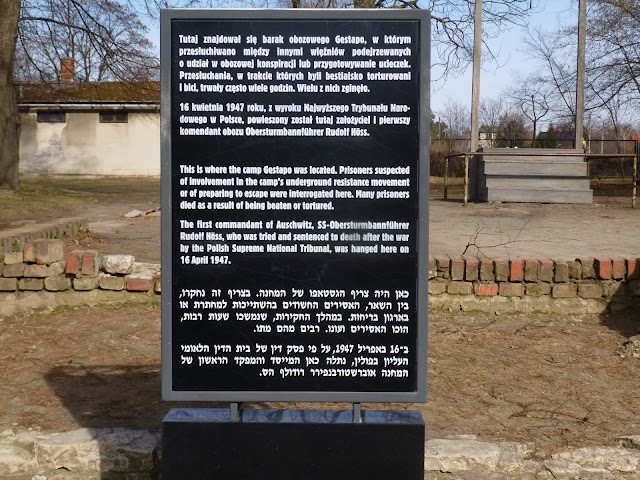
Although it’s the ‘new’ Jewish cemetery, it was established as early as 1800.
Though many of the grave markers were destroyed during the Holocaust, some 9000 tombstones are visible.
Many of these have eerie and elaborate carvings.
Since the cemetery was desecrated during and after World War II, not all grave locations may still be valid. There are pieces of matzevahs (headstones) cemented onto the cemetery walls and when the cemetery was "repaired" after the war, the intact stones were placed "randomly" and not placed in their original locations.
 In the years that have since passed, age and weather have taken their toll on some of the stones; other have toppled or have been pushed over.
In the years that have since passed, age and weather have taken their toll on some of the stones; other have toppled or have been pushed over.


We tried for the third time and were lucky to find the Remuh Synagoge and new cemetery open.
Dating from 1553, this is Kraków's smallest but most active synagogue, with Shabbat services once again taking place here each Friday following the recent completion of restoration works.

 The synagogue was established by the family of famous 16th century Polish rabbi Moses Isserles - better known as 'the Rema,' based on a Hebrew acronym, and is unique for the proximity of the Old Jewish Cemetery adjacent to it.
The synagogue was established by the family of famous 16th century Polish rabbi Moses Isserles - better known as 'the Rema,' based on a Hebrew acronym, and is unique for the proximity of the Old Jewish Cemetery adjacent to it.


In use until 1800, this holy burial ground fell into utter ruin during Nazi occupation with only a dozen tombstones surviving WWII in their original state; among them was that of Rabbi Moses Isserles, which many interpreted as proof of his miraculous power.
After the war the cemetery was 'tidied up' with many of the intact tombstones being rearranged in straight rows, and fragments of those which could not be restored used to create a 'wailing wall' along ulica Szeroka.
Today the cemetery and synagogue - whose modestly decorated interior features a reconstructed bimah and restored ceiling motifs - are an important pilgrimage site for devout Jews from all over the world.












































